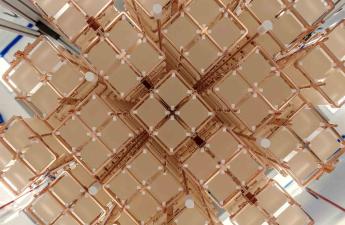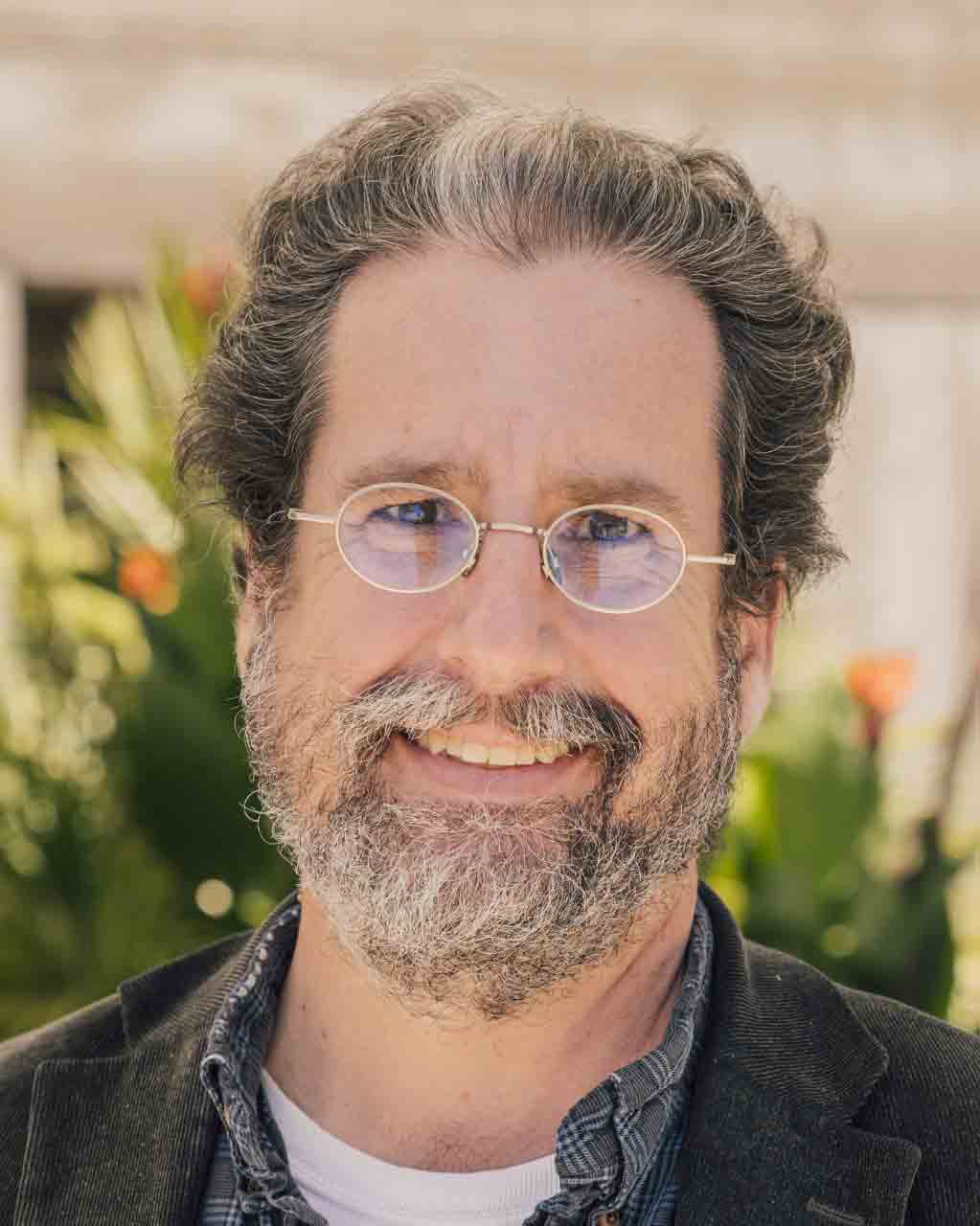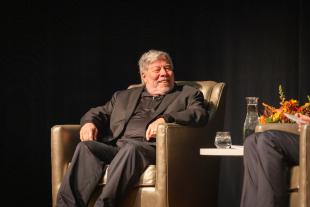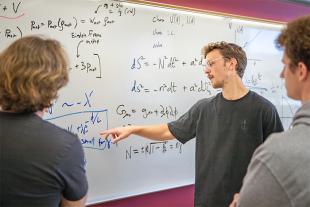Could Students Help Unlock a Mystery of the Universe? New Study on Neutrinos Brings Them Closer

Physicists searching for answers about the really big things we see in the universe and, more importantly, the infinitesimally small have made progress unlocking the mysterious behavior of neutrinos.
And Cal Poly faculty and students are playing a part.
A study recently published in the journal Nature describes how they have implemented stringent limits on the strange possibility that the neutrino is its own antiparticle.
“This is an amazing Learn by Doing experience for students over the years,” said Tom

Gutierrez, a Cal Poly physics professor and one of the study’s co-authors. "It has been an honor to be a part of a cutting-edge project of this kind with so many amazing colleagues from around the world.”
Over the past 10 years, his students have traveled to Italy’s Gran Sasso National Laboratories’ Cryogenic Underground Observatory for Rare Events, or CUORE (which is Italian for “heart”). Built nearly a mile under solid rock, this world-leading physics facility opened in 1989 and hosts neutrino and dark-matter experiments. The lab is located near L’Aquila in central Italy.
Gutierrez and the CUORE collaboration are searching for the neutrinoless double-beta decay, a rare event that would help to explain why the universe is full of matter instead of antimatter. Neutrinoless double-beta decay is a radioactive process in which an atomic nucleus releases two electrons but no neutrinos.
So-called “standard” double-beta decay, which has been measured before, results in the release of two neutrinos. By observing this predicted but so far unseen event, physicists hope to estimate the neutrino's mass and to establish whether neutrinos and their antimatter counterparts, antineutrinos, are different particles.
“We did not find this rare nuclear decay — but placing strict limits on the process is an important part of the scientific process,” said Gutierrez, who, with National Science Foundation support, has worked on this and related projects at Cal Poly since 2007. “If we were to find this decay, it would tell us about how the universe works at the deepest levels and inform how to extend the laws of physics.”
Cal Poly is the only master’s-level institution involved in the project, working with a host of other world class institutions including the Massachusetts Institute of Technology, Yale University, UC Berkeley, UCLA, and the Lawrence Berkeley National Laboratory (which conducts scientific research on behalf of the Department of Energy).
Neutrinos may provide the key to unlocking the mystery.
“Neutrinos are deeply unusual particles, so ethereal and so ubiquitous that they regularly pass through our bodies without us noticing,” according to Berkeley Lab. “Neutrinos are everywhere. They are invisible to the two strongest forces in the universe, electromagnetism and the strong nuclear force, which allows them to pass right through you, the Earth and nearly anything else without interacting.”
Despite infinitely large numbers, their enigmatic nature makes them very difficult to study. All particles have antiparticles, their own antimatter counterpart: electrons have antielectrons (positrons), quarks have antiquarks, and neutrons and protons (which make up the nuclei of atoms) have antineutrons and antiprotons. But unlike all of those particles, it’s theoretically possible that neutrinos are their own antiparticles, according to Berkeley Lab.
“Ordinary material in the universe — us, life, planets, stars, galaxies, etc. — is mostly made of something we physicists label as “matter" (versus “antimatter"), but no one knows exactly why this form of matter survived,” Gutierrez said. “Nature should not favor matter over antimatter and, if equal amounts were created in the Big Bang, we literally shouldn’t exist right now because all of matter and antimatter created in balance should have annihilated long ago. “Yet, here we are! All the familiar matter around us is apparently the teeny-tiny residue of matter that didn’t annihilate with its antimatter counterpart. Because of this, we represent nature’s slight mysterious favoritism toward matter. The rare nuclear decay we are looking for gives a foothold into understanding this puzzle. However, the decay — if it happens — literally breaks the known laws of physics. Which is exciting! That’s science!”
The experiment consists of an array of about 1,000 tellerium dioxide crystals cooled down almost to absolute zero and fitted with extremely sensitive devices that measure temperature. If a specific rise in temperature occurs, it would indicate that neutrinoless double-beta decay had taken place.
If the temperature doesn’t rise, scientists can say with certainty that the decay won’t happen in a given period of time.
The detector itself is a technological marvel: “literally the coldest contiguous cubic meter in the known universe,” Gutierrez said of the device that is shielded from environmental radiation by 4 tons of lead recovered from a Roman shipwreck, found in the remains of a vessel that sank off the Sardinian coast between 80 B.C. and 50 B.C.
“Cal Poly students helped collect this data over the years and remotely did experimental shifts over the pandemic to help collect more data,” Gutierrez said. “Normally, I would send students to Italy to work on the experiment, but the pandemic did not allow for this activity since early 2020. Looking forward, there will hopefully be further opportunities for students to travel abroad to work on the project.”
Lead photo information: The CUORE crystal array in Italy’s Gran Sasso National Laboratories’ Cryogenic Underground Observatory for Rare Events, or CUORE. The array is the set of 1,000 tellurium dioxide crystals that can cool down almost to absolute zero. Built nearly a mile under solid rock, this world-leading physics facility, which opened in 1989, hosts neutrino and dark-matter experiments. Photo by Yury Suvorov.




